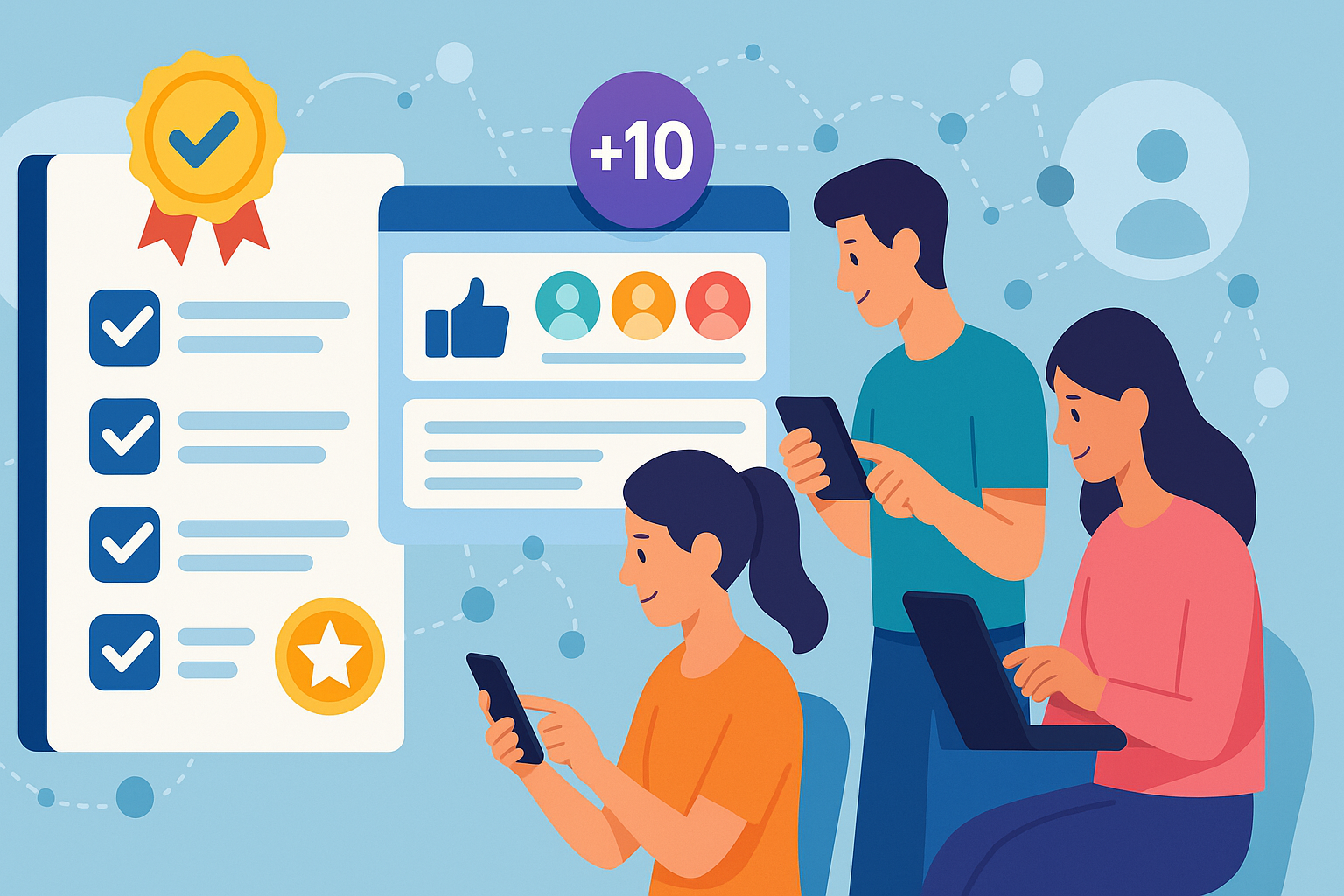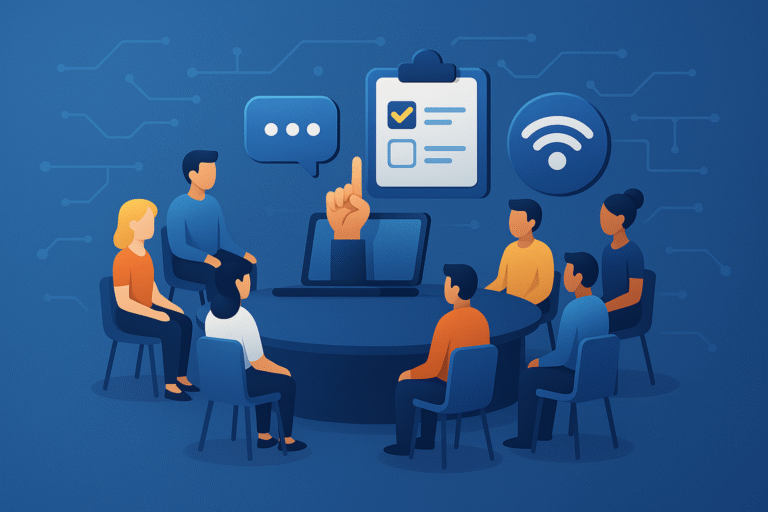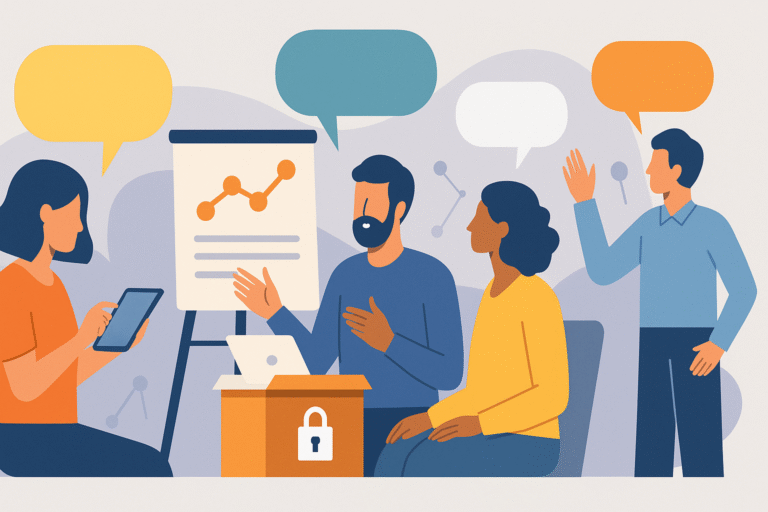
Introduction
In recent years, the term gamification has become increasingly familiar across many sectors: from education to marketing, from fitness to healthcare. But what happens when typical game dynamics – points, badges, rankings, levels – are applied to civic participation and democratic processes?
Gamification in democratic processes represents one of the most innovative frontiers of digital democracy. The idea is simple: using playful elements to make political participation more engaging, intuitive, and motivating. In a context where trust in institutions is often low and civic engagement tends to decline, introducing game-based incentives can strengthen individual motivation and foster a greater sense of community.
What is gamification
Gamification refers to the application of game-like dynamics and rules in non-game contexts. It does not mean turning politics into a video game, but rather introducing challenges, rewards, and progression mechanisms that encourage positive behaviors and active participation.
Common examples outside politics include fitness apps that award badges for goals achieved or loyalty programs that give customers points and rewards. In democratic processes, these mechanisms can encourage participation in online consultations, the creation of citizen proposals, or collaboration in participatory budgeting projects.
Gamification and digital democracy
Digital democracy aims to make the relationship between citizens and institutions more transparent and inclusive. We discussed this in the article What is digital democracy and why it matters today, which shows how digital tools can lower barriers to participation.
In this context, gamification acts as an engagement catalyst. If many citizens perceive institutional procedures as distant and boring, turning them into more interactive and rewarding experiences can restore enthusiasm and a sense of belonging.
A practical example: on a participatory platform, citizens can earn points for constructive comments, badges for innovative ideas, or higher levels based on their consistency in joining consultations. Thus, simple interaction becomes a journey of civic growth.
Benefits of gamification in participatory processes
- Greater motivation: citizens are encouraged to participate not only out of civic duty but also to gain recognition.
- Facilitated learning: game rules make complex procedures easier to understand.
- Immediate feedback: scores and badges provide quick responses on the value of contributions.
- Continuous engagement: the possibility of reaching higher levels encourages long-term participation.
- Community building: collaborative challenges strengthen the sense of belonging.
Challenges and risks
However, gamification is not without risks, which must be carefully managed:
- Superficial participation: some may engage only to collect points.
- Excessive competition: rigid rankings may discourage participation or foster conflict.
- Digital divide: not everyone has the same digital skills or access to technology.
- Manipulation: if poorly designed, gamification can distort behaviors instead of strengthening them.
This is why the approach must be balanced, with clear rules that reward collaboration more than competition.
Concrete examples worldwide
- Decidim (Barcelona): the digital democracy platform introduced badges and recognitions to encourage participation (How Barcelona built a model of digital democracy).
- Better Reykjavik (Iceland): allows citizens to propose and vote on ideas for the city, using ranking mechanisms similar to games.
- European Commission: some initiatives tested playful tools in public consultations, as reported by the OECD.
Gamification and deliberative processes
Gamification not only increases the quantity of participation but can also improve the quality of debate. For example:
- badges for respectful and well-argued comments,
- extra points for those who propose concrete alternatives,
- recognition for those who foster collaboration between groups with opposing opinions.
In this way, behaviors that truly enrich the democratic process are rewarded.
Future perspectives
In the coming years, gamification applied to digital democracy could evolve in three main directions:
- Integration with AI: algorithms capable of automatically rewarding the most valuable contributions.
- Local gamification: neighborhoods, schools, and associations may adopt it for everyday decision-making (How to create a participatory proposal step by step).
- International diffusion: different cultural models will compare and experiment with new approaches.
A project moving in this direction is Concorder – a platform under development for digital civic participation – which aims to integrate gamification mechanics into deliberative processes. This will allow citizens not only to propose ideas but also to be motivated to contribute constructively and consistently. Learn more on Concorder.
Conclusion
If well designed, gamification can make digital democracy more inclusive, motivating, and participatory. It should not replace the genuine value of civic engagement but act as a tool to make it more accessible and stimulating.
As demonstrated by the experiences of Barcelona and Reykjavik, integrating game-like dynamics into democratic processes does not trivialize politics but rather brings citizens closer to institutions in an innovative way.


